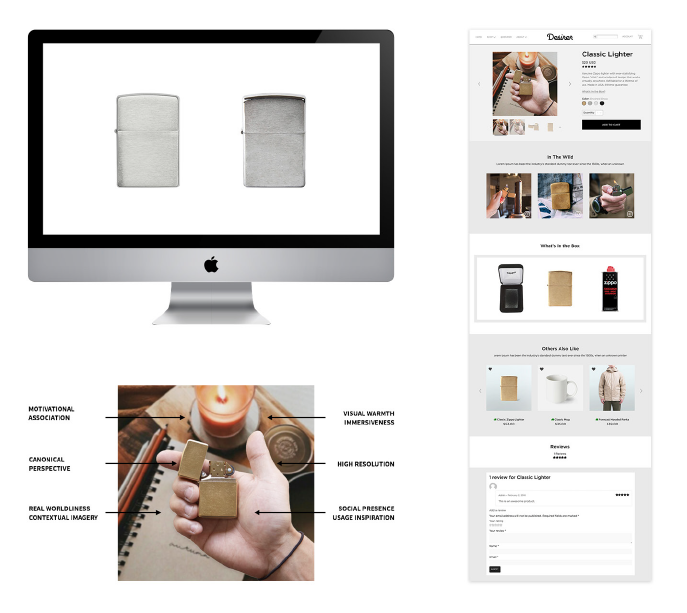
Using Visual Design To Optimize Desirability Online: An Exploration Of Effective Imagery And Visual Design Within E-Commerce
At its core, an e-commerce site is a form of visual communication. It is a content management system that arranges visual elements in a particular way in order to facilitate a specific outcome from a viewer. Hence, in the context of online retailing, the design of a website is not just an aesthetic expression, but a communicational act. In this way, e-commerce web design is language-like. While, in general, aesthetic preferences are inherently subjective and unquantifiable, web-based aesthetic preferences are systematic to a degree. Because shopping online is a primarily visual experience, the quality and value inference a consumer will make when judging a product online will be shaped, to a great extent, by the visual stimuli presented on the screen as well as the overall aesthetic quality of the user interface. As such, design can be used as a tool within e-commerce to enhance desirability and influence the consumer product evaluation. This thesis explores and attempts to evaluate the subjective nuances of design that have the potential to contribute to perceived desirability within the realm of e-commerce. While there is no rigid framework for how desire can be constructed, this thesis provides a semi-systematic evaluation of how subtle variations in imagery, visual design, and typographic form can contribute to consumer product perceptions and thus, outlines some of the more universal rhetorical principles, which can be used to optimize perceived desirability online, given the current condition of the e-commerce market and the general consumer aesthetic preferences that exist today.
SECTOR C
THESIS ADVISORS:
Barbara Kahn (MKTG)
David Comberg (FNAR)

 Visual Studies
Visual Studies